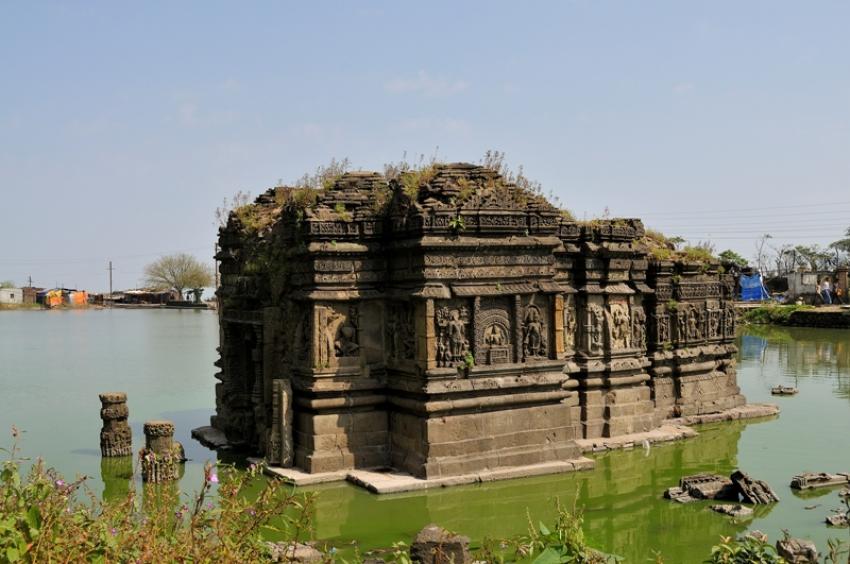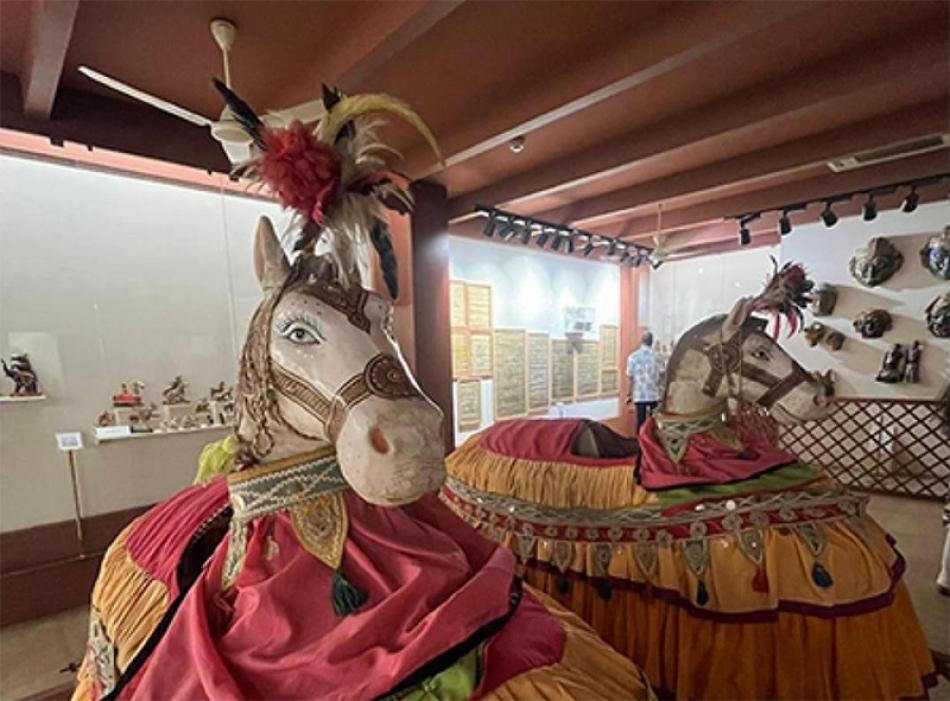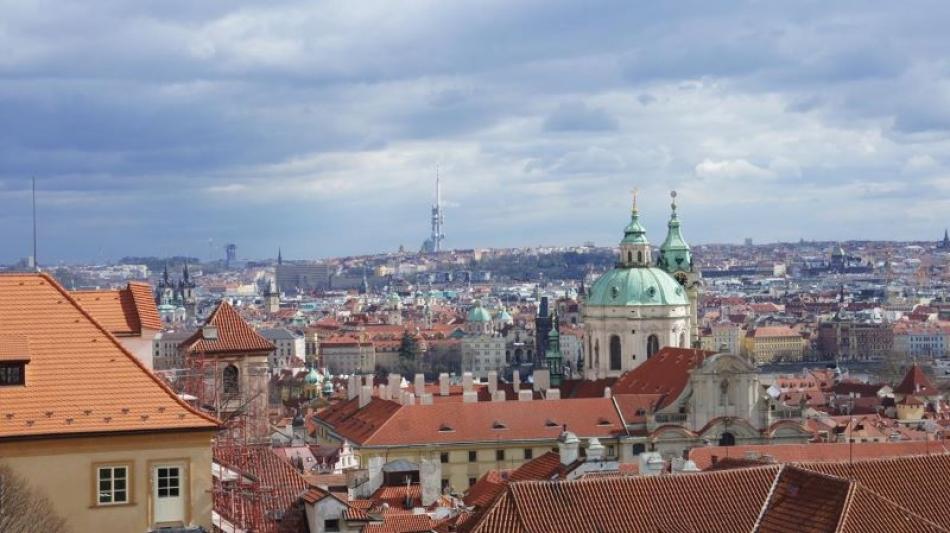NITN | @notintownlive | 09 Aug 2019, 11:27 am

Champaner was the capital of medieval Gujarat but years of neglect the historic site almost went into oblivion. It also showed extraordinary skill at water conservation. A grant from the U.S. Ambassadors Fund for Cultural Preservation has helped to preserve the Medhi Talao Ensemble at Champaner-Pavagadh, reports Jason Chiang
In the 15th and 16th centuries, the city of Champaner in Gujarat was a critical post along the trade route linking the state with the Malwa region in western India. Medieval Champaner grew and developed at the base of the towering Pavagadh Hill, an 800-meter-high peak upon which a fortress was built in the 10th century. It remains a Hindu pilgrimage site to this day. But, over the hundreds of years since its construction, this historic site got lost beneath a dense forest cover.
In 2003, the U.S. Ambassadors Fund for Cultural Preservation (AFCP) provided money for the revival of the Medhi Talao Ensemble at Champaner-Pavagadh. This grant enabled the Heritage Trust in Vadodara, which works on conserving the city’s heritage, to begin salvaging Champaner-Pavagadh through preservation and conservation initiatives.
Champaner-Pavagadh was designated a UNESCO World Heritage Site in 2004.
Sandhya Gajjar, a member of Heritage Trust’s managing committee, talks about this preservation initiative.
Excerpts from an interview
How did you get involved in the preservation of Champaner-Pavagadh?
I was part of the volunteer core team instituted by the Heritage Trust with a focused target of getting the UNESCO World Heritage Site status for Champaner-Pavagadh. The site had major issues—quarrying being one of them—which were a real threat to the standing architectural heritage along the Pavagadh Hill as well as on the Champaner plain.
.jpg)
What would you say is the most fascinating feature of the Champaner-Pavagadh site and why?
What I find most fascinating is its dual location—the Pavagadh Hill and the Champaner plain at its foot. At the main entry, the ruins of the fortified Champaner, capital of medieval Gujarat, are separated from the way up the Pavagadh hill by just a strip of road. Most of the 114 heritage monuments, listed by Heritage Trust, are in this area; spread over six square kilometers of the Core Zone of the site. Some of these are among the most amazing examples of stone carving and architecture.
.jpg)
What process or strategy was followed by Heritage Trust when planning the preservation of this historical site?
As a nonprofit, our role is focused on activating public awareness and engagement with the site, and providing proactive support to the government agencies involved in the preservation and conservation work.
Our strategy with Champaner-Pavagadh was to initially get it on the World Monuments Fund’s watchlist of 100 Most Endangered Heritage Sites in 2000. Our next step was to apply for the U.S. Ambassadors Fund for Cultural Preservation grant. Since we were aiming to get our dossier ready for the UNESCO World Heritage Site meeting for 2004, we were going full steam ahead documenting every aspect of Champaner-Pavagadh. Some of this work revealed the extraordinary water conservation systems that the Hindu and Jain rulers of Pavagadh had put in place over the many centuries of their rule.
.jpg)
What activities were undertaken the Cultural Preservation grant?
Medhi Talao was a large man-made pond at such a strategic point that it gathered almost all the rainwater flowing down that part of the hill, for use by people during the hot summer months. The talao [pond] had stone steps all around it, which made it easy to access and use for local people and pilgrims. There was also a square structure jutting out, like a tower, on the edge of the pond.
The grant was used for the revitalisation of the Medhi Talao complex. The ruined structure around the talao was documented and several of the ruined pieces that had fallen into it were fished out, cleaned and placed in what was “reconstructed” as the talao environs in the time of the Sultans or Rajput rulers at Pavagadh Hill.
Winning the AFCP grant created a qualitative boost for the till-then-largely-ignored site. It created a buzz in the state media and a sense of pride among the locals, who had been living in the shadow of the heritage monument for generations.
SPAN/Trans World Features
- From Kennedy’s Proposal to 1850s Saloons: The Three Historic D.C. Restaurants Everyone Must Try
- This city has the best bagel in the US, and it’s not New York!
- I escaped to Pachmarhi — what I found in the queen of Satpura left me spellbound
- Air Canada just ranked the Best New Restaurants of 2025 - And the Top Spot isn't who you think
- Rediscovering Arunachal's Monpa Cuisine: One Woman’s Millet Momo Revolution
- Discovering Heritage: A visual journey through Odisha crafts museum Kalabhoomi
- From kebabs to biriyani: Lucknow gets UNESCO honour for its royal cuisine
- Delta takes Spanish flavours to the skies
- Kolkata’s iconic Kathi Roll among world’s top 10 wraps: TasteAtlas
- Yellow Taxis and the Colours of Puja
Qantas is set to open its new Auckland International Lounge on Dec 17, ahead of the peak holiday travel period, as the airline expands its trans-Tasman network. The new facility replaces the previous lounge and increases both floor area and passenger capacity.
Air Canada has introduced a new non-stop route connecting Toronto with Rio de Janeiro, with the first flight landing in the Brazilian city on Friday morning.
Air India, India’s leading global airline, and Maldivian, the national airline of the Maldives, have entered a bilateral interline partnership aimed at boosting connectivity between the two countries.





